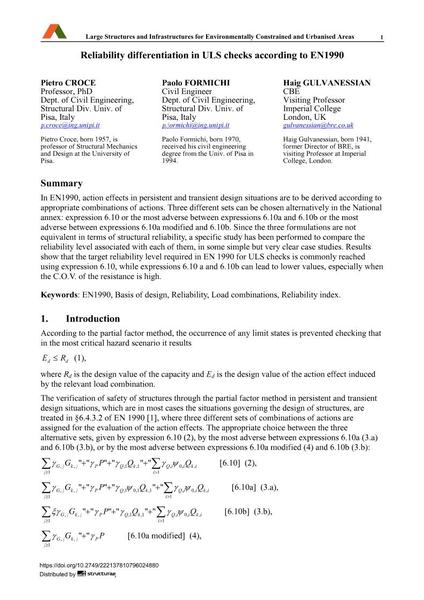Reliability differentiation in ULS checks according to EN1990

|
|
|||||||||||
Bibliografische Angaben
| Autor(en): |
Pietro Croce
Paolo Formichi Haig Gulvanessian |
||||
|---|---|---|---|---|---|
| Medium: | Tagungsbeitrag | ||||
| Sprache(n): | Englisch | ||||
| Tagung: | IABSE Symposium: Large Structures and Infrastructures for Environmentally Constrained and Urbanised Areas, Venice, Italy, 22-24 September 2010 | ||||
| Veröffentlicht in: | IABSE Symposium Venice 2010 | ||||
|
|||||
| Seite(n): | 366-367 | ||||
| Anzahl der Seiten (im PDF): | 8 | ||||
| Jahr: | 2010 | ||||
| DOI: | 10.2749/222137810796024880 | ||||
| Abstrakt: |
In EN1990, action effects in persistent and transient design situations are to be derived according to appropriate combinations of actions. Three different sets can be chosen alternatively in the National annex: expression 6.10 or the most adverse between expressions 6.10a and 6.10b or the most adverse between expressions 6.10a modified and 6.10b. Since the three formulations are not equivalent in terms of structural reliability, a specific study has been performed to compare the reliability level associated with each of them, in some simple but very clear case studies. Results show that the target reliability level required in EN 1990 for ULS checks is commonly reached using expression 6.10, while expressions 6.10 a and 6.10b can lead to lower values, especially when the C.O.V. of the resistance is high. |
||||
| Stichwörter: |
Zuverlässigkeit Zuverlässigkeitsindex Lastkombinationen
|
||||
